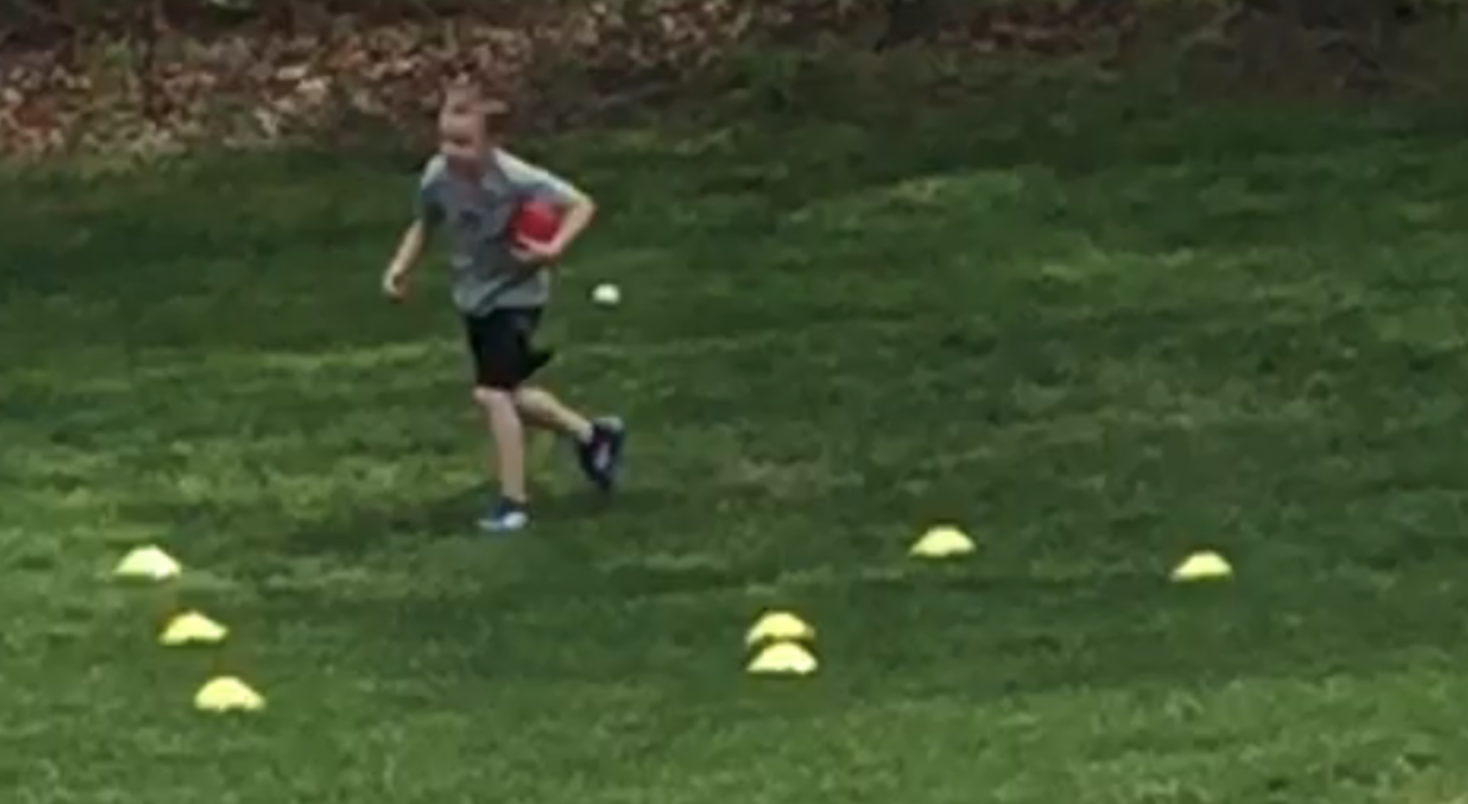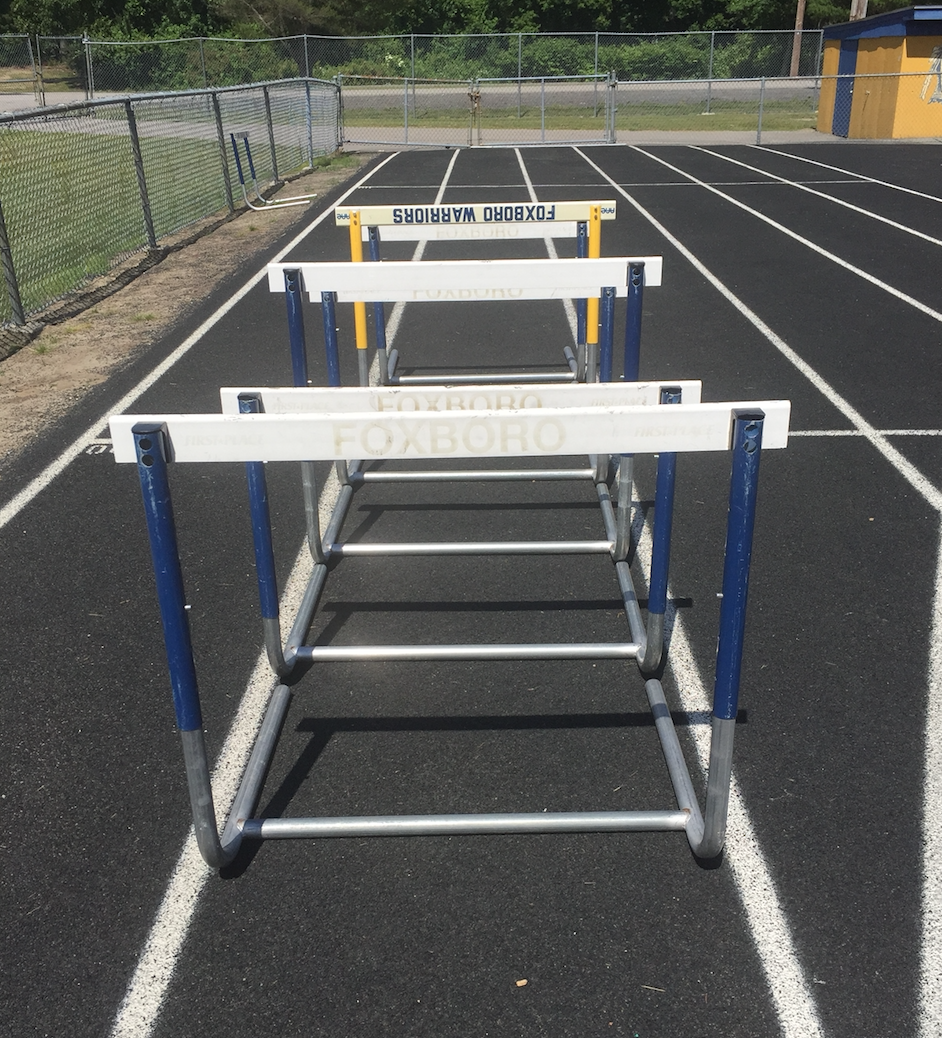The Rhythm of Speed

While there are many elements to developing sound speed in young athletes, one of the most crucial is rhythm.
Rhythm is defined as the expression of timing, and its practicality in sport is vast.
Linear speed requires a well-timed sequence of contralateral action. Any delays or errors in this timing can drastically limit velocity of movement.
In the context of sport, linear speed is seldom of great importance, but rhythm plays a significant role in an athletes ability to change direction fluidly and in time with extraneous factors such as teammates, opponents and apparatus (i.e. ball etc).
Rhythm is a singular characteristic within the broader scope of coordination – and this is important because many trainers and coaches do not realize that coordination is not an entity unto itself. It is a system of skills and comprised of several varying physical traits:
Balance – both dynamic and static
Kinesthetic Differentiation – determining the force required to produce a desired outcome
Movement Adequacy – the ability to move the extremities in opposition and during locomotion
Spatial Awareness – the knowledge of where one is in space and in relation to external factors
All coordination-based skills are based developed during the pre-adolescent phase of life due to the plastic nature of the nervous system – and rhythm is no exception.
When teaching rhythm to young athletes, it is best to do so in a progressive manner following this simple succession:
- Simple
- Enhance
- Disrupt
- Complex
‘Simple’ rhythm-based exercises are often non-locomotive in nature and quite rudimentary in their timing sequencing.
‘Enhance’ rhythm-based exercises are locomotive-centered and involve natural contralateral action.
‘Disrupt’ rhythm-based exercises are those which serve to interrupt a natural pattern and force the young athlete to dynamically adapt to a new timing cycle.
‘Complex’ rhythm-based exercises are based on multifaceted motor tasks.
The following are examples of each type of rhythm-based exercise that you can use in your own training sessions or practices:
Simple:
Slight Patterns –
Slight patterns are basic skipping exercises that can be done in place and progressed to locomotive. Begin by having your young athletes perform basic ankle hops in place (small hops with limited knee flexion and a strong plantar-flexion drive). Add varying elements of hip and knee movements in order to create a timing sequence.
For example, have your young athletes perform 5 ankle hops (bilaterally) and then 1 strong hip/knee flexion drive with the left leg. Repeat 3 – 4 times for one set.
Slight patterns should be progressed in order to make the timing sequence more challenging. For example, have your young athletes perform 3 ankle hops (bilaterally) and then a hip/knee flexion drive with the right leg followed immediately by a knee flexion drive with the left leg. Repeat 3 – 4 times per set.
Enhance:
Enhance-based rhythm exercises are progressive from ‘simple’ variations in that they are locomotive and can incorporate external equipment.
Slight Patterns –
Perform patterns similar to the one’s listed above, however this time and your young athletes execute them while traveling across a gym floor or field.
Skip Loop –
Set out cones roughly 15 – 20 feet apart. Have each athlete perform a basic jump rope pattern (with jump rope) from one cone to the next. Once they reach the second cone, have them stop the jump rope, walk around the cone and begin the same pattern back to the first cone.
Over time, add to the complexity and skill level of the jump rope patterns that your young athletes are performing.

Disrupt:
Hurdle Walk-Over –
Set out 8 – 15 short hurdles at measured intervals (2 feet apart each, for example). Have your young athletes jog or sprint through the hurdles – forcing only one leg to navigate. For example, as the left leg maintains an even jogging motion, the right leg executes a powerful knee drive at each hurdle (in this case, the left leg is ‘outside’ the hurdles and does not have to engage them). Repeat for both legs.
Staggered Hurdle Walk-Over –
This exercise is the same as above, but this time the hurdles are placed at varying, non-uniform distances apart from each other. This forces the young athlete to acclimate to a varying rhythm pattern rather than become accustom to one particular and predictable model.
Complex:
Movement Jacks –
Much like jumping jacks, this exercise is a combination of varying lower and upper body movements in all 3 planes.
Movement possibilities are literally endless:
- frontal upper/frontal lower (like a standard jumping jack)
- sagittal upper/sagittal lower
- transverse upper/frontal or sagittal lower
- bilateral lower/same upper
- bilateral lower/unilateral upper
- unilateral lower/bilateral upper
- unilateral lower/unilateral upper
Be sure to work at your young athletes skill level and add progressions in a variety of ways:
- 45 degree angles (with arm movements or jumping patterns)
- Jumping rotations (90, 180 or 360 degrees)
- Tempo changes (faster or slower)
- Add joint actions (hip flexion/extension etc)
Rhythm is a fundamental aspect of developing quality and practical speed in young athletes. It is important to start the process of rhythm training during the pre-adolescent years, but will allow young athletes to exhibit enhanced speed and athletic ability for years to come.

0 Comments for “The Rhythm of Speed”